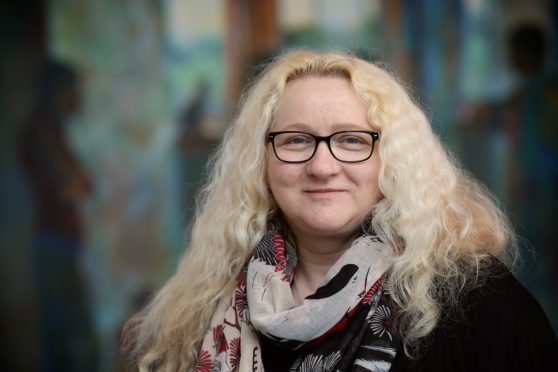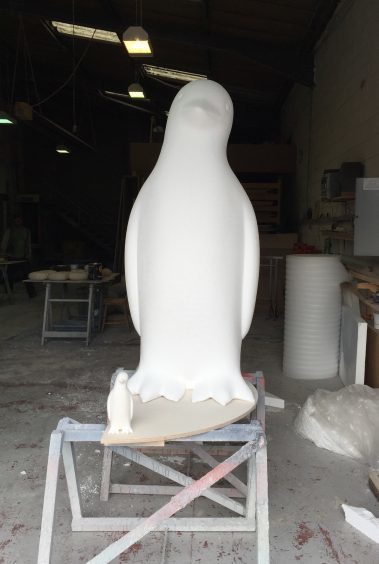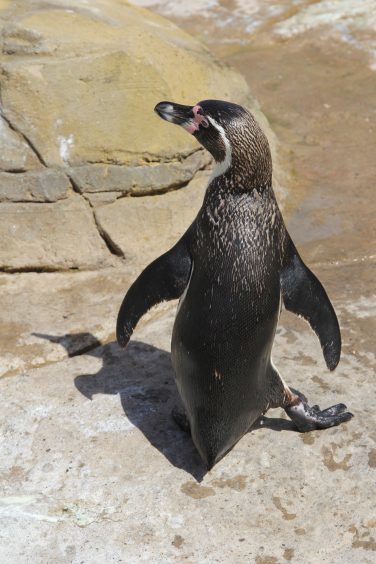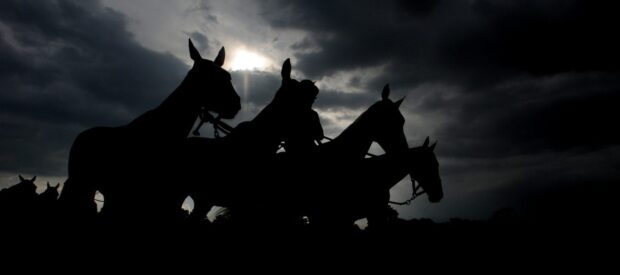Next summer, the streets of Dundee will host a waddle of colourful, friendly penguins.
In aid of the charity Maggie’s in Dundee, the project gives artists the chance to design and decorate 6ft penguin sculptures, which will be auctioned to raise funds for Maggie’s. Artist and academic Janice Aitken designed the penguins for Maggie’s Penguin Parade.
“When I was first approached to create the sculpture, I said yes immediately,” says Janice, “but then had to work out what techniques I would use to make the prototype. I work in an art school that has amazing facilities, so there was almost no limit to the sort of techniques I had at my disposal.
“Any design starts with initial sketches and I worked out the basic design using drawings and reference photographs that I took of the Humboldt penguins at St Andrews Aquarium.
“In the past I have worked in clay and plaster, but I thought it would be interesting to use cutting edge technology to develop the design. I use 3D animation software in a lot of my work, creating realistic textures for facial reconstructions and creating scientific visualisations, so the logical method for developing the initial designs was to use the same software.
“Working closely with Duncan of Jordanstone colleagues Ali Napier and Rob Jackson who are experts in 3D printing, I created a series of physical prototypes from my digital designs. Each iteration threw up different issues, such as some elements being too prominent, or the balance of the design being just a little off.
“To allow me to do some final tweaks , colleagues Ray Byrne and Phong Van Dam created a plaster version of the maquette that enabled me to carry out subtle sculptural changes to the model.
“Although I love working digitally, there’s something about getting your hands covered in plaster and physically carving and adding elements to a design that is very satisfying. This is the stage where I was able to ensure that the final penguin sculpture would be safe for public display. The last thing we wanted was a sculpture that had sharp elements to injure people or small parts that could be broken off!
“Converting the small model to a giant sculpture was beyond even the facilities at Duncan of Jordanstone, so the design was sent off to a manufacturing company in Cardiff. They took the digital files and the maquette and, using a huge digital router, created a full sized polystyrene model. I was able to go there to work on the final touches to the large model. It was an amazing experience, seeing something that started out in my imagination become real in front of my eyes.
The final exciting stage was when the fully-finished fibreglass models were delivered to Dundee. Wrapped in bubble wrap and looking like ghostly daleks, six of them were delivered to me at DJCAD. They actually sat in my office for a little while, alarming and amusing my colleagues.
“I am very fortunate in that I had the support of my senior colleagues at the University of Dundee to carry out this project, so I was in a position to donate my time and the royalties from the design to the Maggie’s charity.
“One of the reasons I was so keen to get involved is it creates paid opportunities for local artists and designers.
“I feel very strongly that artists should be paid for their work, just like any other professionals. Those whose designs are chosen, will receive a very reasonable fee if they paint the penguin themselves. Of course, some of the designs will be by children and possibly people who don’t have the skill to paint a large sculpture so artists from the Wild in Art and Maggie’s creative team will paint those.
“So, now it’s over the other artists and designers of Dundee and surrounding area to surprise and delight us with their designs.”



